When you think of animals, you probably envision cute and cuddly creatures or majestic beasts that seem straight out of a nature documentary. But not all animals are gentle giants or harmless critters. Some are always ready to pounce, attack, and defend their territory. These animals prefer to strike first and figure things out later. Here’s a list of 13 animals you might want to avoid crossing paths with because they don’t hesitate to unleash their wild side.
1. Honey Badger
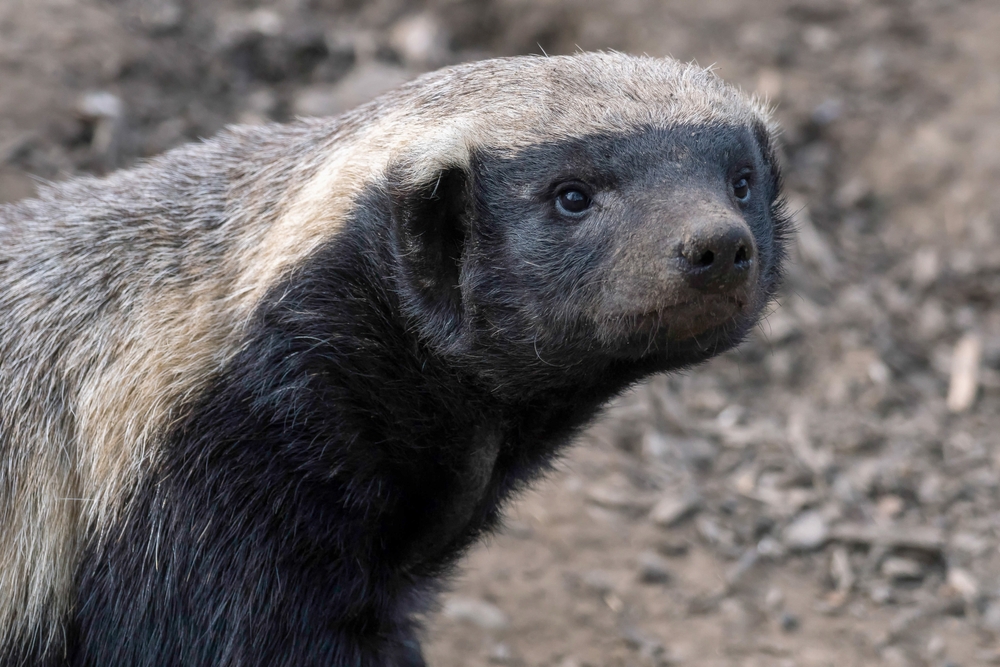
Honey badgers are often touted as one of the most fearless creatures on Earth. Despite their small size, they exhibit an aggressive nature that belies their stature. When threatened, a honey badger won’t back down, even from predators much larger than itself. According to a study by Dr. Brian Jones from the University of Pretoria, honey badgers have been observed attacking lions and other large predators in defense of their territory. Their thick skin and ferocious attitude make them a force to be reckoned with in the wild.
These animals have no qualms about going after anything that poses a threat, including humans. Their sharp teeth and claws make them formidable opponents in any confrontation. Interestingly, honey badgers are known for using their intelligence to escape tricky situations, such as using tools to open enclosures. In the wild, their diet consists of venomous snakes and other dangerous prey, reinforcing their fearless reputation. So, if you ever come across a honey badger, it’s best to give it plenty of space.
2. African Elephant
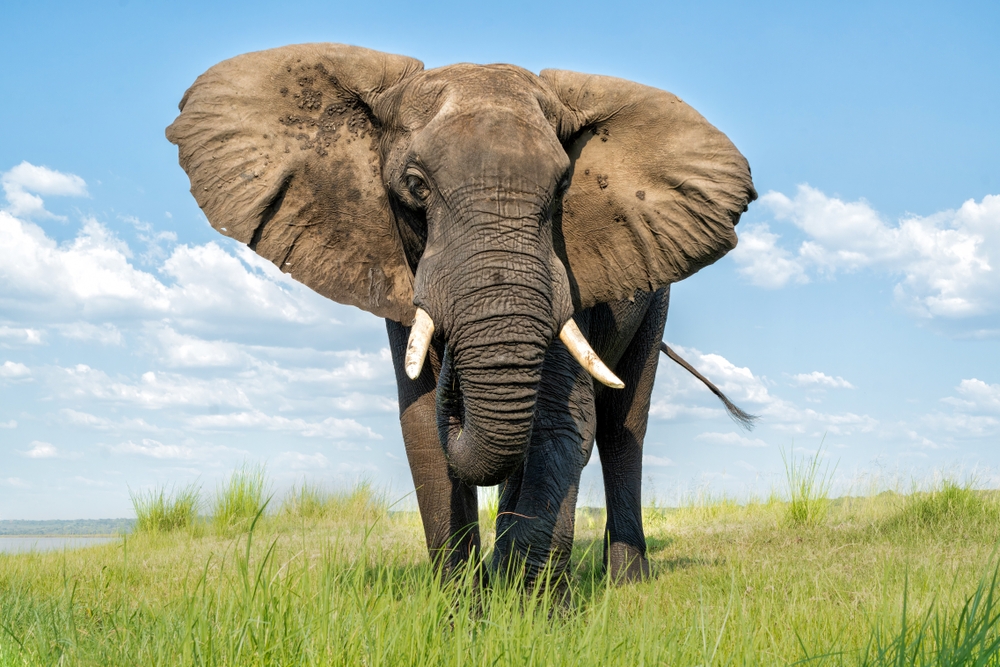
You might think elephants are gentle giants, but African elephants can be surprisingly aggressive. They are known to charge without much warning, especially if they feel their herd is in danger. Male elephants, known as bulls, become particularly agitated during musth, a periodic condition characterized by increased testosterone and aggressive behavior. When in this state, elephants have been known to attack vehicles and trample anything in their path. Even outside of musth, elephants exhibit protective instincts that can turn violent if they sense a threat.
Elephants use their massive size to their advantage, often bulldozing through obstacles when they charge. Their large ears, which they flap to show aggression, can pick up the slightest sounds, making them aware of dangers long before they see them. Their tusks are formidable weapons, capable of inflicting serious harm to humans and other animals alike. As social creatures, they protect their young with unmatched ferocity, often forming a circle around calves to guard them from predators. So while they may look majestic from afar, it’s wise to keep your distance.
3. Cape Buffalo
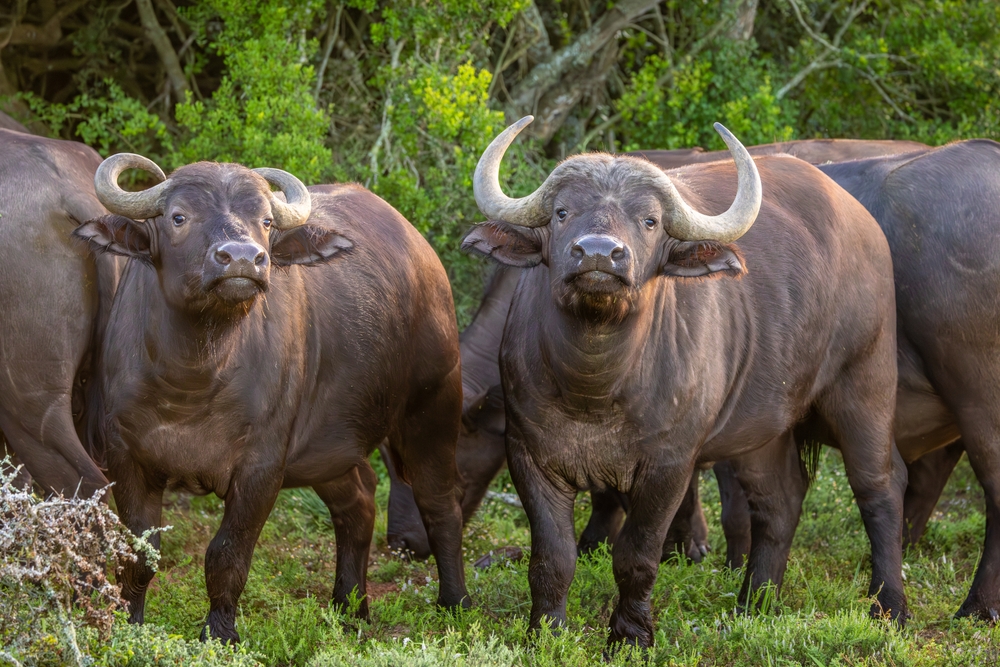
Cape buffalo are known for their unpredictable and often aggressive behavior. They are part of the “Big Five” game animals in Africa, not just for their size, but for their infamous temper. Cape buffalo are incredibly protective of their herd and will not hesitate to charge at any perceived threat. According to wildlife expert Dr. Jane Goodall, these animals have been known to hold grudges and have attacked people and vehicles long after feeling threatened. Their muscular build and sharp horns make them dangerous adversaries.
A single buffalo can weigh up to 1,000 kg, and their horns spread out like a natural battering ram. When they charge, they do so with the intent to cause serious harm, sometimes even fatally. Their eyesight and hearing are acute, allowing them to detect threats from a considerable distance. Even predators like lions and crocodiles have learned to respect these powerful creatures, often opting for easier prey. If you ever find yourself near a cape buffalo in the wild, it’s best to back away slowly and avoid sudden movements.
4. Cassowary
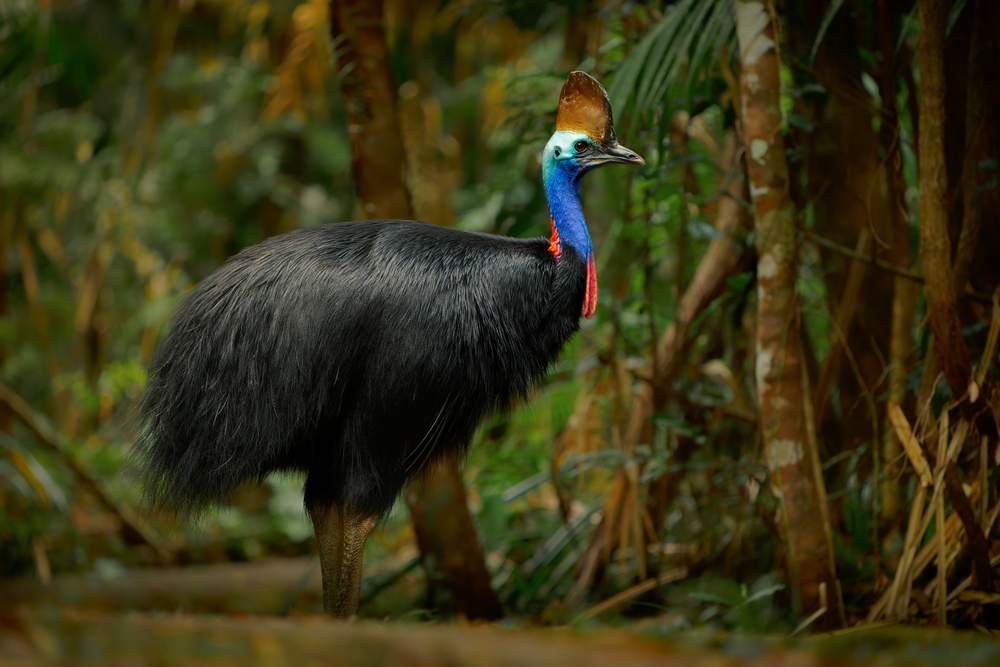
The cassowary is a large, flightless bird native to the tropical forests of New Guinea, nearby islands, and northern Australia. It might not look threatening at first glance, but this bird can be deadly. With its strong legs and sharp claws, the cassowary can deliver powerful kicks capable of causing severe injuries. The bird’s middle claw resembles a dagger and can easily tear through flesh if threatened. This species is often considered one of the most dangerous birds in the world due to its aggressive nature.
Cassowaries are known to attack when they feel cornered or if their chicks are threatened. Despite their size, they are incredibly fast runners and can maintain speeds of up to 50 km/h. Their vivid blue and black plumage can be misleading, as it gives them a striking yet deceivingly peaceful appearance. In their natural habitat, they play a crucial role in spreading seeds from the fruits they consume. However, if you encounter one, it’s best to respect its space and observe from a safe distance.
5. Wolverine
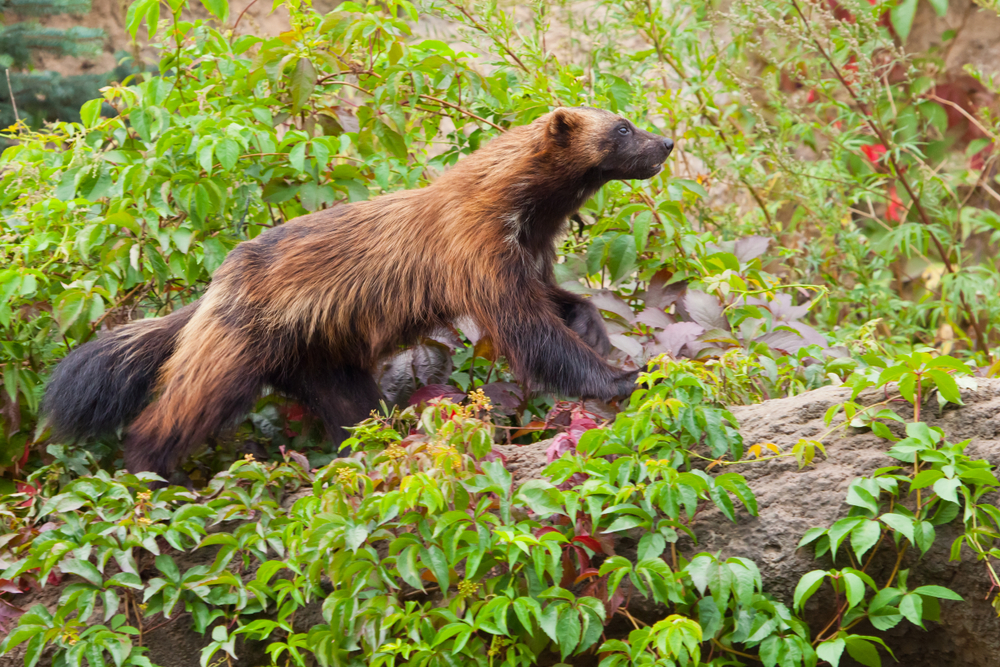
Wolverines may look like oversized weasels, but they possess an aggression that can take even the most seasoned wildlife expert by surprise. These tenacious mammals are known for their strength and ferocity, often taking on prey much larger than themselves. Wolverines have been documented hunting moose and deer, showcasing their ability to take down sizeable creatures. According to research led by Dr. Stephanie M. Carlson from the University of California, Berkeley, wolverines display fierce territorial behavior that often leads to aggressive confrontations. They have powerful jaws and sharp claws that they use with deadly efficiency.
Despite their fearsome reputation, wolverines play a vital role in their ecosystem as scavengers and predators. Their diet varies widely, and they are not picky eaters, often feasting on carrion left by other predators. Wolverines are solitary animals, and their wide-ranging habitats make them elusive to researchers and observers. They are well-adapted to survive in harsh, wintry environments, with thick fur and large paws for traversing snow. If you find yourself in wolverine territory, it’s wise to leave them be and admire these resilient creatures from afar.
6. Tasmanian Devil
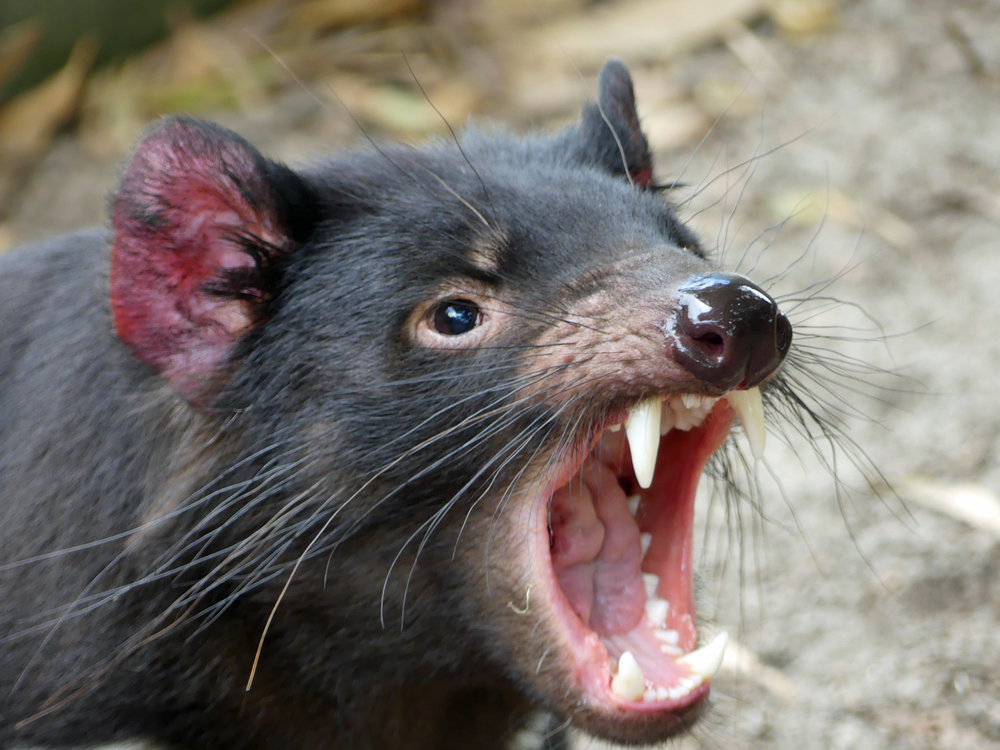
The Tasmanian devil is a carnivorous marsupial found only on the island of Tasmania. Despite its small size, it exhibits aggression that has earned it a fearsome reputation. Known for their fierce temperament, Tasmanian devils will not hesitate to bare their sharp teeth and release spine-chilling screams when threatened. These nocturnal creatures often engage in aggressive displays, particularly when competing for food. They have a powerful bite, capable of crushing bones and tearing through flesh, making them formidable opponents.
Tasmanian devils are scavengers, primarily feeding on the carcasses of other animals, which might explain their sometimes aggressive behavior. They have a keen sense of smell, allowing them to locate food from great distances. Despite their aggressive nature, they are solitary and shy, generally avoiding human interaction. The devils play a critical role in their ecosystem by helping keep the environment clean of carrion. While they might seem intimidating, they are more likely to flee than fight if given the chance.
7. Hippopotamus
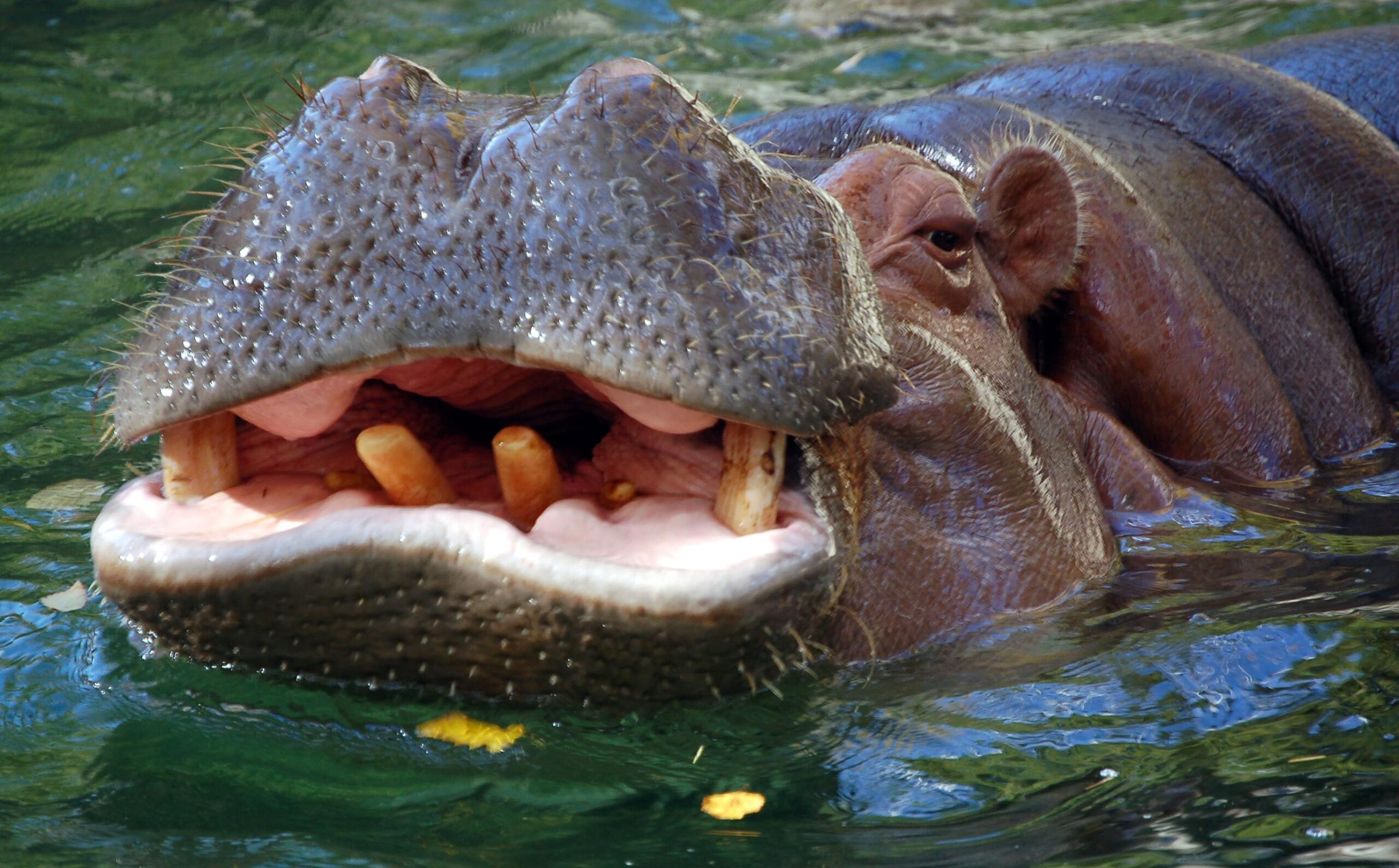
Despite their rotund and somewhat comical appearance, hippos are considered one of the most dangerous animals in Africa. They are highly territorial, particularly in water, and can be extremely aggressive when provoked. Hippos have been known to attack boats and humans who venture too close to their territory. According to wildlife expert Peter Apps, a hippo’s massive jaws can open up to 180 degrees, and their teeth can crush bones with ease. This aggression, coupled with their ability to run surprisingly fast on land, makes them formidable animals.
Though they primarily feed on grass, hippos are fiercely protective of their young and their territory. In water, they are highly agile and use their bulk to intimidate or overturn anything that poses a threat. Hippos often mark their territory with dung, and intruders are met with violent aggression if they ignore these markers. Their nocturnal nature means they spend much of their time underwater during daylight hours, emerging at night to graze. If you ever find yourself near a hippo in the wild, it’s crucial to respect their space and keep a safe distance.
8. Komodo Dragon
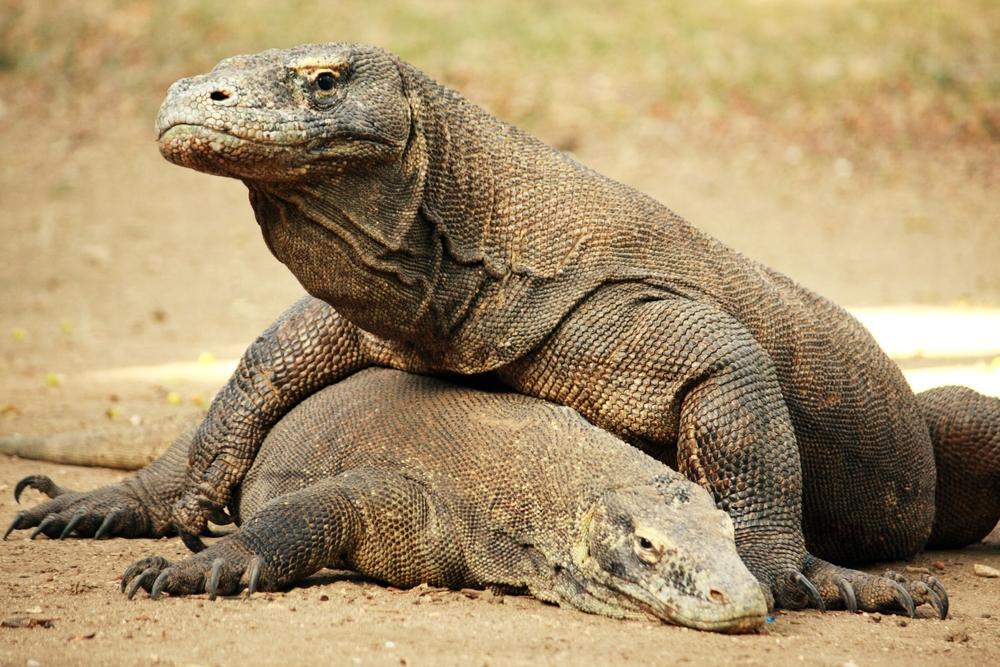
Native to a few Indonesian islands, the Komodo dragon is the largest lizard in the world and exhibits an aggressive streak that aligns with its fearsome reputation. These reptiles are apex predators in their habitat, using their size, strength, and razor-sharp teeth to take down prey. They have been known to ambush large mammals, delivering a fatal bite infused with toxic bacteria. Komodo dragons are opportunistic feeders, and their aggressive nature ensures they rarely miss a meal. They use their strong sense of smell to locate prey, sometimes over considerable distances.
Despite their size, Komodo dragons are stealthy hunters, often waiting in ambush before launching a surprise attack. Their powerful tails can be used as weapons, and their rough skin provides excellent camouflage in arid environments. These reptiles are solitary by nature, coming together only to breed or feed on large carcasses. In some cases, they have been known to exhibit cannibalistic behavior, further highlighting their aggressive tendencies. While they are fascinating creatures, observing them from a safe distance is essential for your safety.
9. Polar Bear

In the icy expanses of the Arctic, polar bears reign supreme as top predators. Their massive size and strength make them one of the most formidable hunters in their environment. Polar bears are known to be aggressive, particularly when they feel threatened or are protecting their cubs. These bears have powerful limbs and sharp claws, which they use to capture seals and other prey. Their keen sense of smell allows them to detect food from miles away, making them efficient hunters in a challenging environment.
While polar bears do not typically see humans as prey, they are naturally curious and may approach people out of interest. However, if they perceive humans as a threat, they can become dangerously aggressive. Climate change and melting sea ice have forced polar bears to venture closer to human settlements in search of food, increasing the likelihood of dangerous encounters. Despite their majestic appearance, these bears are wild animals with unpredictable behavior. It’s crucial to respect polar bears and maintain a safe distance if you ever encounter one in the wild.
10. Black Mamba
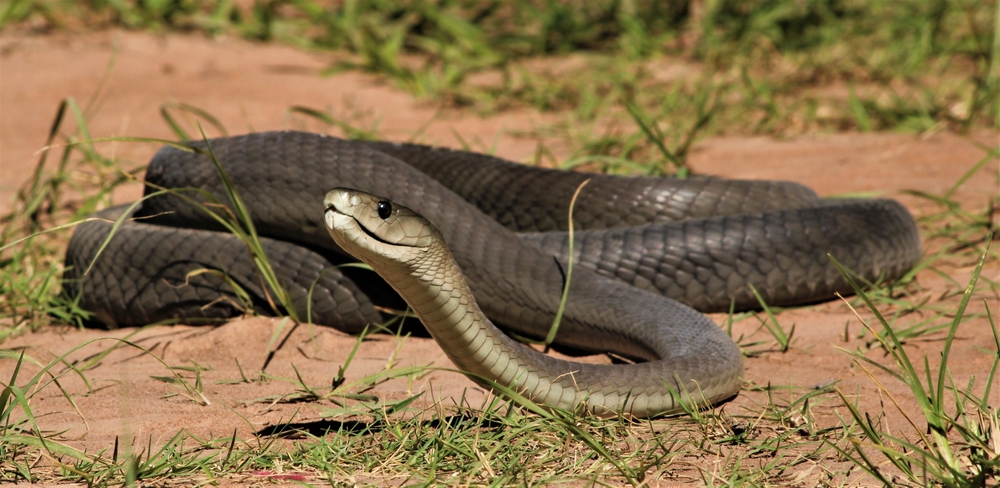
The black mamba is one of the most feared snakes in the world, known for its speed, agility, and aggressive demeanor. Native to parts of Africa, these snakes can reach speeds of up to 20 km/h, making them one of the fastest snakes on the planet. They are highly territorial and will not hesitate to strike if they feel threatened. The black mamba’s venom is lethal, capable of causing paralysis and death within hours if not treated promptly. Their reputation for aggression and deadly efficiency has made them a subject of fascination and fear.
Despite their fearsome reputation, black mambas prefer to avoid human interaction, often fleeing at the first sign of disturbance. However, if cornered, they will raise their heads, spread their necks, and deliver multiple bites in quick succession. The snake’s slender body allows it to navigate through trees and underbrush with ease, making it a formidable predator in its environment. They primarily feed on small mammals and birds, using their speed and venom to subdue prey. While encounters with black mambas are rare, they are best admired from a distance.
11. Bull Shark
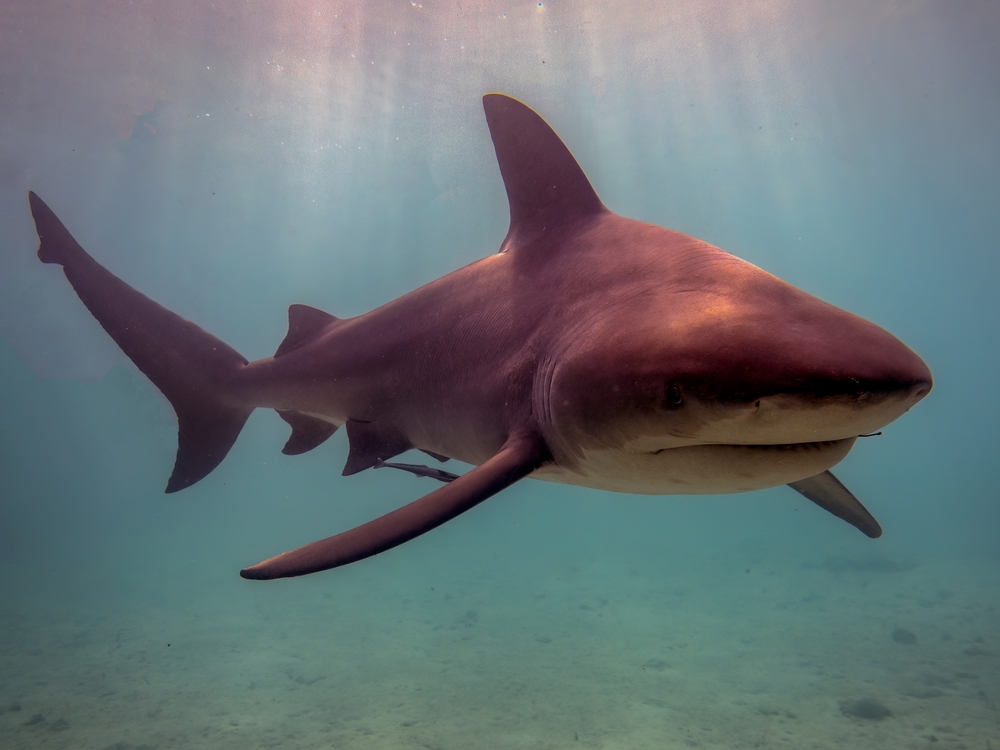
Bull sharks are widely regarded as one of the most aggressive shark species, known for their bold nature and tendency to venture into freshwater habitats. They can be found in warm, shallow waters around the world and are notorious for their unpredictable behavior. Bull sharks have been implicated in a significant number of unprovoked attacks on humans, often driven by curiosity or mistaken identity. Their stocky build and powerful jaws make them adept hunters, capable of taking down a variety of prey. Unlike other sharks, bull sharks can tolerate freshwater, enabling them to swim up rivers and estuaries.
These sharks have a diverse diet, feeding on fish, dolphins, and even other sharks. Their adaptability allows them to thrive in a wide range of environments, from coastal waters to inland rivers. Bull sharks are solitary hunters, often using the cover of murky waters to ambush prey. Their aggressive nature and propensity for exploring new territories make them a formidable presence in the water. While they are fascinating creatures, caution is advised if you find yourself swimming in waters known to be inhabited by bull sharks.
12. Grizzly Bear
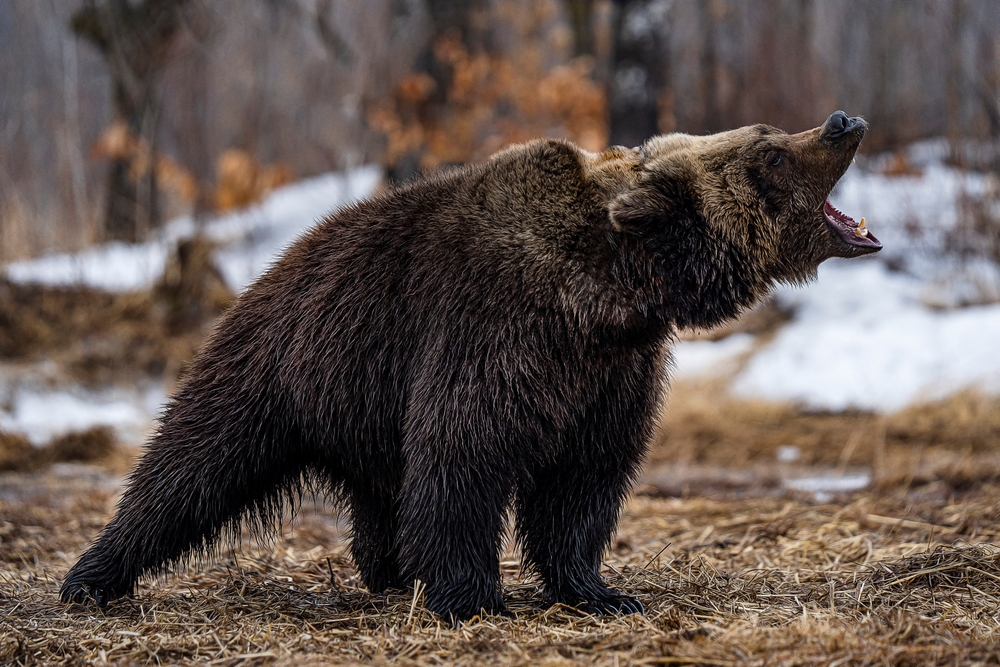
Grizzly bears are powerful predators known for their strength and unpredictability. These bears are found in North America, primarily in parts of Canada, Alaska, and the northwestern United States. Grizzlies are highly territorial and will aggressively defend their space, particularly if they are surprised or have cubs nearby. With their massive size and powerful limbs, they are capable of inflicting serious harm. Despite being omnivores, grizzlies have been known to attack large mammals, including moose and elk, showcasing their prowess as hunters.
Grizzly bears are usually solitary, roaming vast territories in search of food. They have an acute sense of smell that helps them locate food sources from great distances. While they primarily feed on berries, fish, and plants, they won’t hesitate to scavenge carcasses or hunt when necessary. Human encounters with grizzlies can be dangerous, particularly if the bear feels threatened or startled. If you ever encounter a grizzly bear in the wild, remain calm and slowly back away, avoiding sudden movements that might provoke an attack.
13. Blue-Ringed Octopus
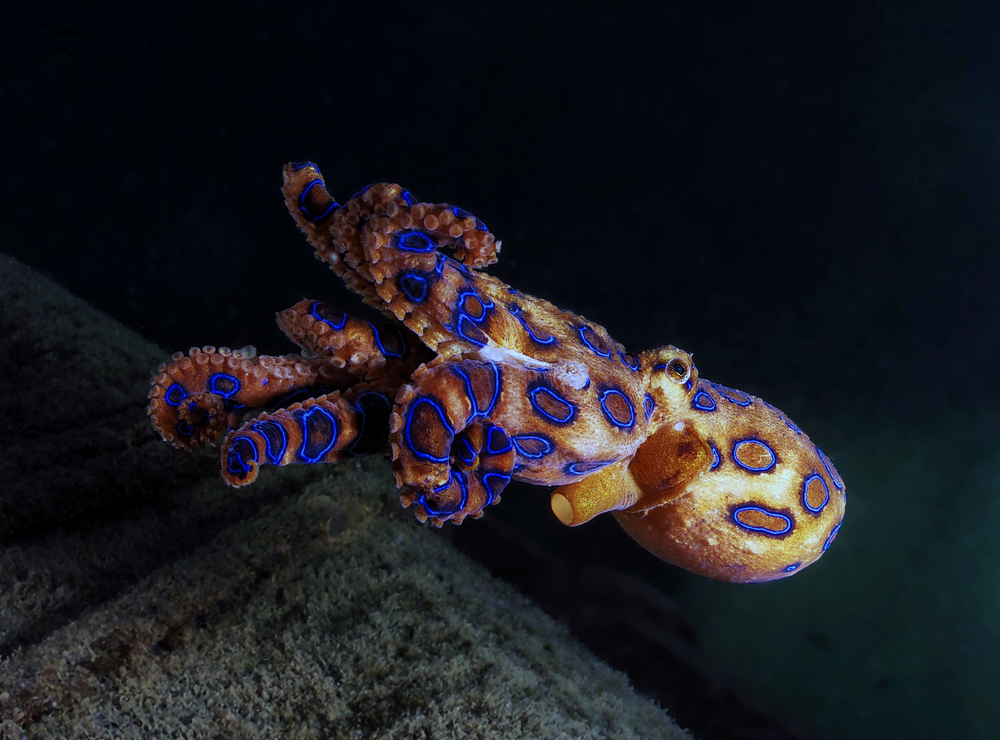
The blue-ringed octopus is a small but highly venomous marine animal found in tide pools and coral reefs in the Pacific and Indian Oceans. Despite its diminutive size, this octopus has a potent neurotoxic venom capable of causing paralysis and death in humans. The blue-ringed octopus is generally docile but becomes aggressive when provoked or threatened. It displays bright blue rings as a warning sign before delivering a potentially lethal bite. The venom contains tetrodotoxin, a substance more toxic than cyanide, which can cause respiratory failure and death if not treated promptly.
These octopuses are elusive and prefer to stay hidden, often camouflaging themselves to avoid detection. They feed on small crustaceans, using their venom to immobilize prey before consuming it. Despite their dangerous reputation, they play a crucial role in maintaining the balance of their marine ecosystems. Human encounters with blue-ringed octopuses are rare, but it’s essential to exercise caution and avoid handling them. If you find yourself in their habitat, admire these beautiful but deadly creatures from a safe distance.
